2-Phenyl-2-chloropropane on treatment with alc. KOH gives mainly
2-Phenylpropene
3-Phenylpropene
1-Phenylpropan-2-ol
1-Phenylpropan-3-ol
The correct Answer is:A
To solve the question regarding the reaction of 2-Phenyl-2-chloropropane with alcoholic KOH, we will follow these steps:
Step 1: Understand the Structure of 2-Phenyl-2-chloropropane
2-Phenyl-2-chloropropane has the following structure:
- It consists of a propane chain (3 carbon atoms) with a chlorine atom and a phenyl group (C6H5) attached to the second carbon.
- The structure can be represented as:
Cl|CH3−C−CH3|C6H5
Step 2: Identify the Reactant and the Reagent
The reactant is 2-Phenyl-2-chloropropane, and the reagent is alcoholic KOH (potassium hydroxide in alcohol). The alcohol typically used in the lab is ethanol (C2H5OH).
Step 3: Determine the Reaction Mechanism
Alcoholic KOH acts as a base. In this case, it will facilitate an elimination reaction (E2 mechanism) because there is an alpha hydrogen available for elimination.
Step 4: Elimination Reaction
In the E2 mechanism, the base (OH-) will abstract a hydrogen atom from the carbon adjacent to the carbon bearing the chlorine atom. The chlorine atom will leave as a chloride ion (Cl-), leading to the formation of a double bond.
- The reaction can be summarized as:
CH3−C(Cl)−CH3+OH−→CH3−C=CH2+Cl−+H2O
Step 5: Identify the Product
The product formed from this elimination reaction is 2-Phenylpropene. The double bond forms between the second and third carbon atoms, resulting in the following structure:
C6H5∣CH3−C=CH2
This compound is known as 2-Phenylpropene.
Conclusion
Thus, the main product obtained from the reaction of 2-Phenyl-2-chloropropane with alcoholic KOH is 2-Phenylpropene.
---
2-Phenyl-2-chloropropane has the following structure:
- It consists of a propane chain (3 carbon atoms) with a chlorine atom and a phenyl group (C6H5) attached to the second carbon.
- The structure can be represented as:
Cl|CH3−C−CH3|C6H5
The reactant is 2-Phenyl-2-chloropropane, and the reagent is alcoholic KOH (potassium hydroxide in alcohol). The alcohol typically used in the lab is ethanol (C2H5OH).
Alcoholic KOH acts as a base. In this case, it will facilitate an elimination reaction (E2 mechanism) because there is an alpha hydrogen available for elimination.
In the E2 mechanism, the base (OH-) will abstract a hydrogen atom from the carbon adjacent to the carbon bearing the chlorine atom. The chlorine atom will leave as a chloride ion (Cl-), leading to the formation of a double bond.
CH3−C(Cl)−CH3+OH−→CH3−C=CH2+Cl−+H2O
The product formed from this elimination reaction is 2-Phenylpropene. The double bond forms between the second and third carbon atoms, resulting in the following structure:
C6H5∣CH3−C=CH2
This compound is known as 2-Phenylpropene.
Thus, the main product obtained from the reaction of 2-Phenyl-2-chloropropane with alcoholic KOH is 2-Phenylpropene.
Topper's Solved these Questions
- HALOALKANES AND HALOARENESBOOK - MODERN PUBLICATIONCHAPTER - HALOALKANES AND HALOARENESEXERCISE - B. MULTIPLE CHOICE QUESTIONS (from competitive Examinations)
63 Videos
- HALOALKANES AND HALOARENESBOOK - MODERN PUBLICATIONCHAPTER - HALOALKANES AND HALOARENESEXERCISE - C. MULTIPLE CHOICE QUESTIONS (with more than one correct answers)
10 Videos
- HALOALKANES AND HALOARENESBOOK - MODERN PUBLICATIONCHAPTER - HALOALKANES AND HALOARENESEXERCISE - HIGHER ORDER THINKING SKILLS
13 Videos
- GENERAL PRINCIPLES AND PROCESSES OF ISOLATION OF ELEMENTSBOOK - MODERN PUBLICATIONCHAPTER - GENERAL PRINCIPLES AND PROCESSES OF ISOLATION OF ELEMENTSEXERCISE - COMPETION FILE (Integer Type Numerical Value Type Questions)
5 Videos
- ORGANIC COMPOUNDS CONTAINING NITROGEN BOOK - MODERN PUBLICATIONCHAPTER - ORGANIC COMPOUNDS CONTAINING NITROGEN EXERCISE - UNIT PRACTICE TEST
5 Videos
Similar Questions
Knowledge Check
1-phenyl-2-chloropropane on treating with alc. KOH gives mainly
A1-phenylpropeneB2-phenylpropeneC1-phenylpropane-2-olD1-phenylpropane-1-ol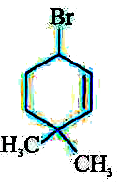 on treatment with aqueous KOHA
on treatment with aqueous KOHA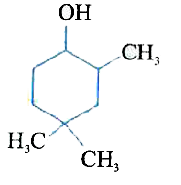 B
B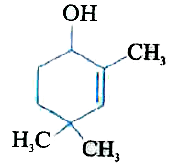 C
C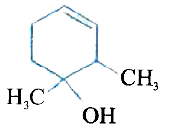 D
D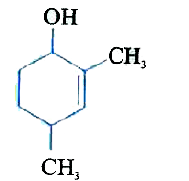
A mixture of 1−chloropropane and 2−chloropropane when treated with alcoholic KOH, it gives
A1-propeneB2-propeneCIsopropyleneDAll of the above
2-Chloro-2-methylpropane on reaction with aqueous KOH gives X as the major product. X is
View SolutionEthyl bromide on treatment with alcoholic KOH gives
View SolutionEthylene dichloride on treatment with aqueous KOH gives
View SolutionA mixture of 1−chloropropane and 2−chloropropane when treated with alcoholic KOH, it gives
View SolutionA mixture of 1− chloropropane and 2− chloropropane which treated with alcoholic KOH gives
View Solution
